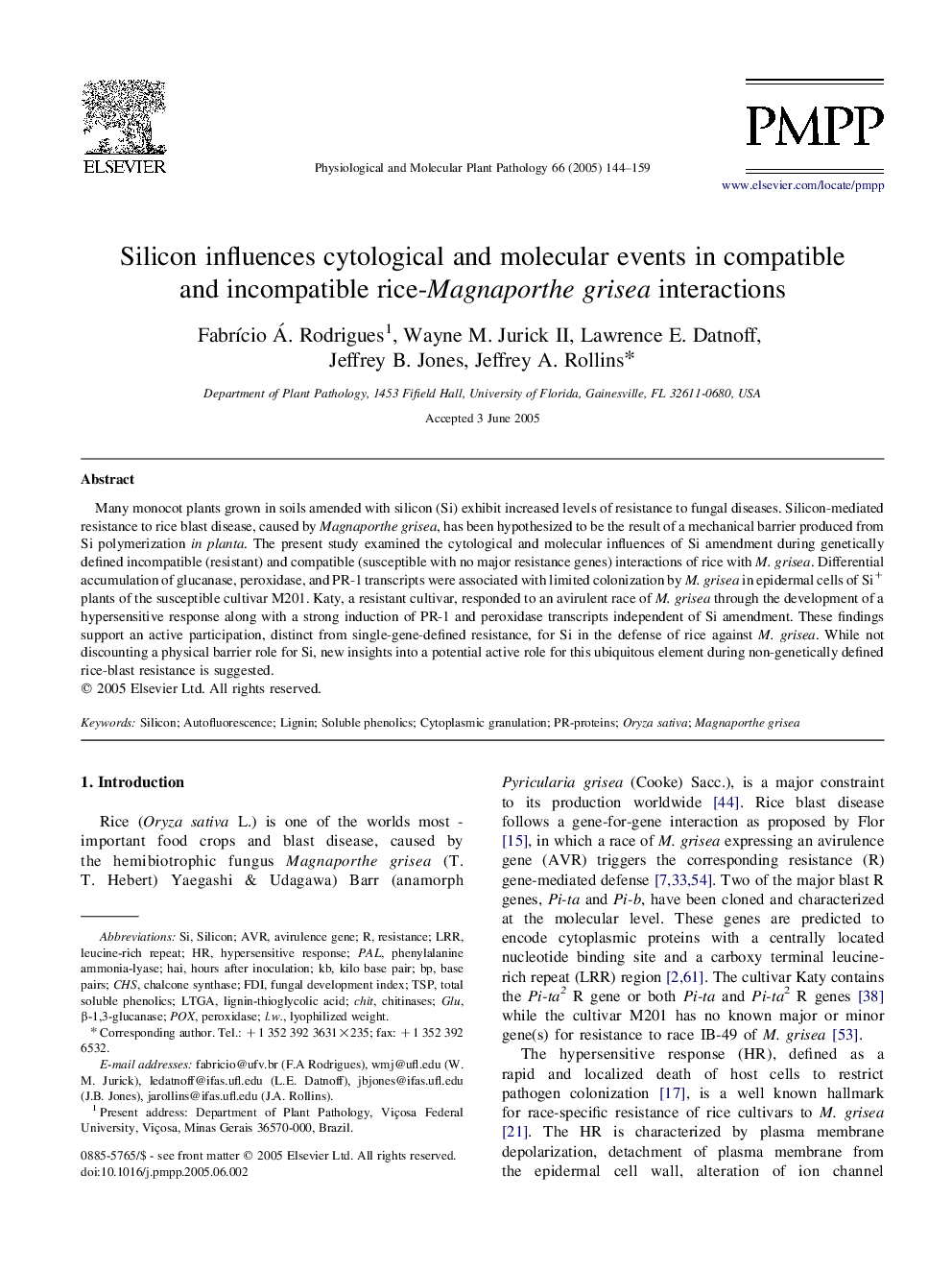| Article ID | Journal | Published Year | Pages | File Type |
|---|---|---|---|---|
| 9144650 | Physiological and Molecular Plant Pathology | 2005 | 16 Pages |
Abstract
Many monocot plants grown in soils amended with silicon (Si) exhibit increased levels of resistance to fungal diseases. Silicon-mediated resistance to rice blast disease, caused by Magnaporthe grisea, has been hypothesized to be the result of a mechanical barrier produced from Si polymerization in planta. The present study examined the cytological and molecular influences of Si amendment during genetically defined incompatible (resistant) and compatible (susceptible with no major resistance genes) interactions of rice with M. grisea. Differential accumulation of glucanase, peroxidase, and PR-1 transcripts were associated with limited colonization by M. grisea in epidermal cells of Si+ plants of the susceptible cultivar M201. Katy, a resistant cultivar, responded to an avirulent race of M. grisea through the development of a hypersensitive response along with a strong induction of PR-1 and peroxidase transcripts independent of Si amendment. These findings support an active participation, distinct from single-gene-defined resistance, for Si in the defense of rice against M. grisea. While not discounting a physical barrier role for Si, new insights into a potential active role for this ubiquitous element during non-genetically defined rice-blast resistance is suggested.
Keywords
HAITotal soluble phenolicsPOXMagnaporthe griseaCHSPALTSPOryza sativaLRRPR-Proteinsβ-1,3-GlucanaseAVRleucine-rich repeatbase pairskilo base pairhours after inoculationFDIchalcone synthasesiliconAutofluorescenceSoluble phenolicsphenylalanine ammonia-lyaseLigninResistanceHypersensitive responsePeroxidaseChitAvirulence geneChitinasesGlu
Related Topics
Life Sciences
Agricultural and Biological Sciences
Plant Science
Authors
FabrÃcio Á. Rodrigues, Wayne M. II, Lawrence E. Datnoff, Jeffrey B. Jones, Jeffrey A. Rollins,
